Do you groan when you stand up or stretch before you sneeze? These are the signs of aging, and you are not alone. But if you have pain in your joints that comes and goes or is constant, it could be more than aging. It could be psoriatic (sorry-at-eek) arthritis, and you need to take action quickly. Even waiting six months might be bad news. See if you have any of the symptoms.
1. What is Psoriatic Arthritis?

Psoriatic arthritis (PsA) is an inflammatory type of arthritis. It affects small and large joints on both sides of the body. Fingers to knees to hips endure pain and stiffness. 30% of sufferers also have the skin condition, psoriasis, and in four out of five cases, the patients developed psoriasis before the arthritis. (Let’s be clear: that means one out of five developed the arthritis first.)
2. What is Psoriasis?
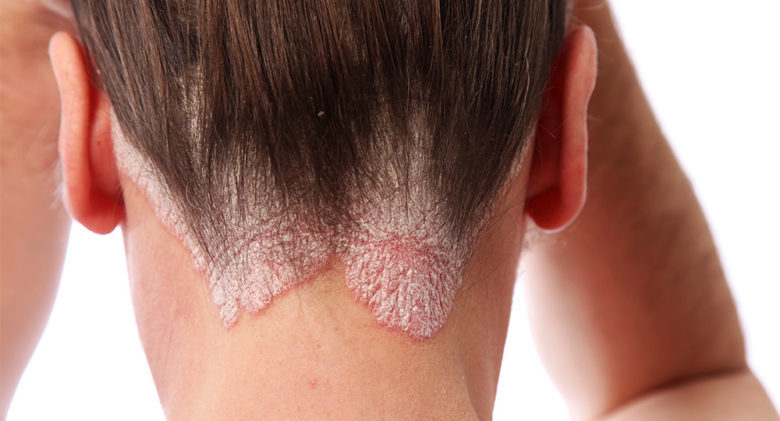
Psoriasis is a skin disorder in which skin cells multiply ten times faster than they should. The result is patches of red skin covered with white scales. It typically affects the knees, elbows, and scalp but can also show up on palms, soles of the feet and torsos. These areas can itch or hurt.
3. Who’s At Risk?

Unfortunately, we are all susceptible to PsA, especially those with a family history of psoriasis. Even though the majority male and female sufferers fall in the 30-50 age bracket, children can develop it, too.
4. Get Help Fast

Studies show that if psoriatic arthritis is left untreated for six months, joints can be permanently damaged. Although there is no cure yet, treatment aims to control the symptoms and prevent damage to joints. Here are the symptoms…
5. Foot Pain
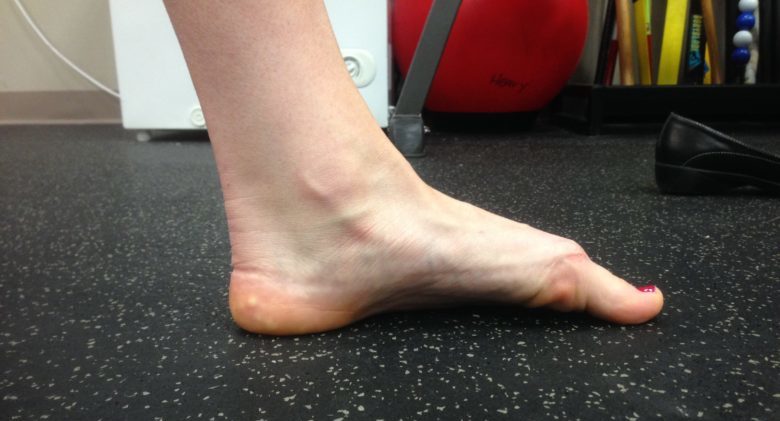
Heel pain is common because the Achilles tendon gets inflamed. This tendon connects your calf muscle to your heel bone. There might also be swelling around your ankle. According to the psoriasis and psoriatic arthritis website, pain can lead a person to adjust their walk. If you have to claw your toes, hyper-extend your big toe, or roll on your ankle to avoid walking in pain, you should call your doctor.
6. Swollen Fingers Or Toes
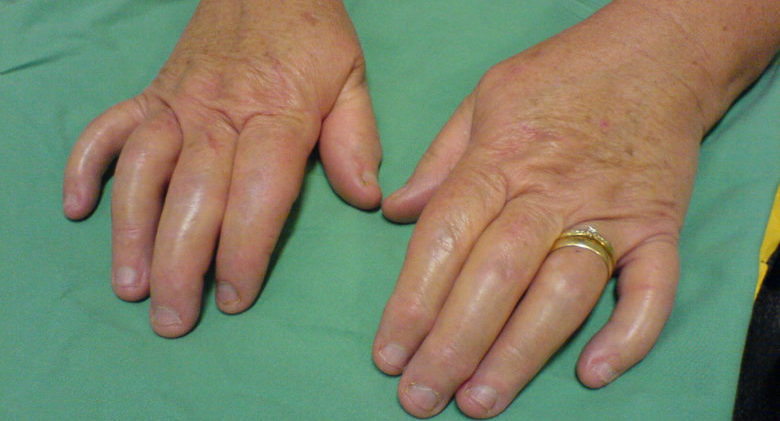
Approximately 40% of patients with psoriatic arthritis suffer from swollen fingers and/or toes. It’s called dactylitis, and it’s the result of inflammation of the digit’s entire tendon. This is not common in the other 100 types of arthritis. Therefore, “sausage” fingers or toes should be a warning sign that you need to see a doctor.
7. Stiff And Painful Joints
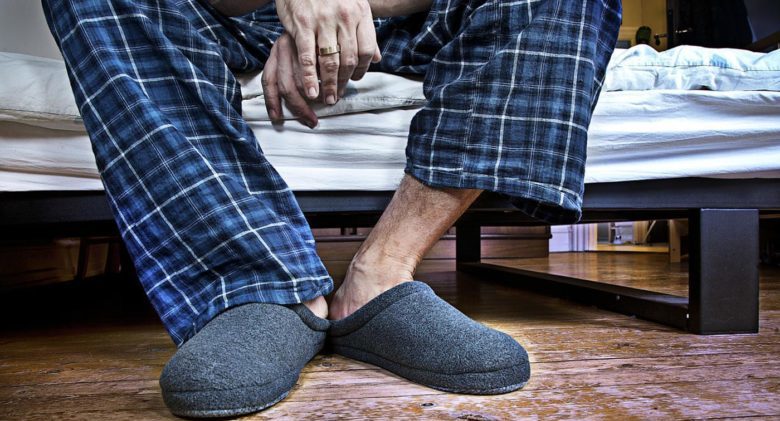
Entheses is where a tendon or a ligament connects to the bone. If this becomes inflamed it’s called enthesitis and can cause new bone tissue to form. A bone spur is an example. This newly-formed tissue can inhibit movement and be painful. If you experience joint stiffness in any joint, especially after being inactive, take it as a warning sign.
8. Fingernail And Toenail Pitting
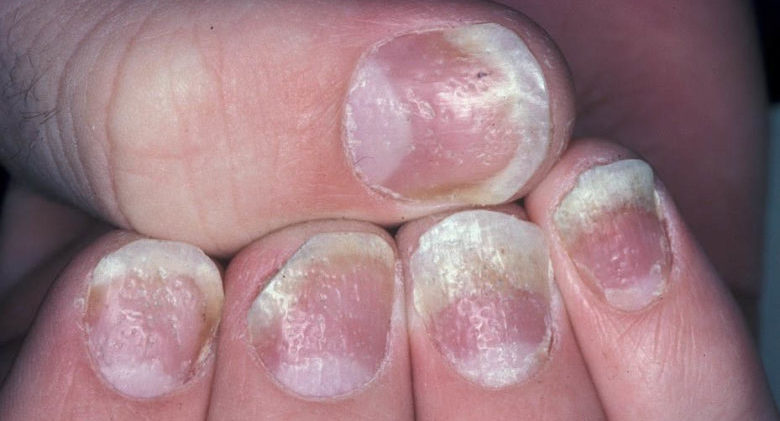
This is one of the less-common symptoms. When psoriatic arthritis affects a joint in the fingertips or toes, it can lead the nails to discolor or pit. Pitting is when small depressions—pits—form in the nail. Sometimes, the nail can fall off. This symptom is more common among males and is a tell-tale sign of psoriatic arthritis.
9. Neck And Back Pain

Neck and back stiffness or pain, sometimes severe, can result from inflammation in the spine. This can also occur in the pelvis where the pain can reside in one or both hips. This pain can be constant or intermittent, and in 95% of people, it is accompanied by other symptoms. One in five sufferers may also develop spondylitis—a condition where the spinal bones fuse and become rigid.
10. Fatigue

Pain leads to fatigue, so it’s no surprise that people experiencing chronic pain from arthritis generally feel worn out. A 2010 study found that psychological distress and physical disability can also contribute to fatigue. Dr. Elaine Husni, Vice Chair of Rheumatology at the Cleveland Clinic, points out that medicine can help by alleviating the pain that leads to fatigue.
11. Anemia

Anemia is a common symptom of psoriatic arthritis, but not necessarily an indicator of PsA. This deficiency in functioning red blood cells can also result in fatigue as well as headaches, shortness of breath, and pale complexion. According to the healthline website, psoriatic anemia is typically mild.
12. Vision Problems

People with psoriasis have a slightly greater chance of developing uveitis (you-vee-EYE-tis). This inflammation of the parts of the eye that make up the uvea could manifest as blurry vision, redness, floaters, and pain. Patients with psoriatic arthritis have an even greater chance of experiencing this problem, and it can lead to permanent vision damage.
13. Telescoping Fingers
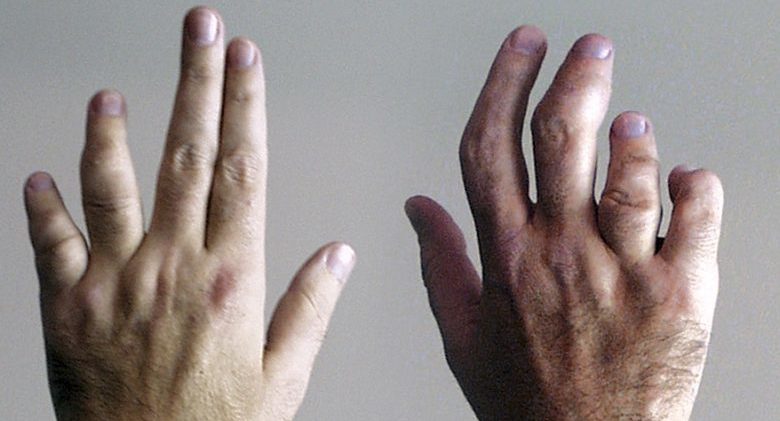
Approximately 5% of patients with PsA experience telescoping fingers. This deformity occurs when the bones in the fingers are reabsorbed and the soft tissue collapses. The collapsed fingers look like a telescope.
14. Treatment
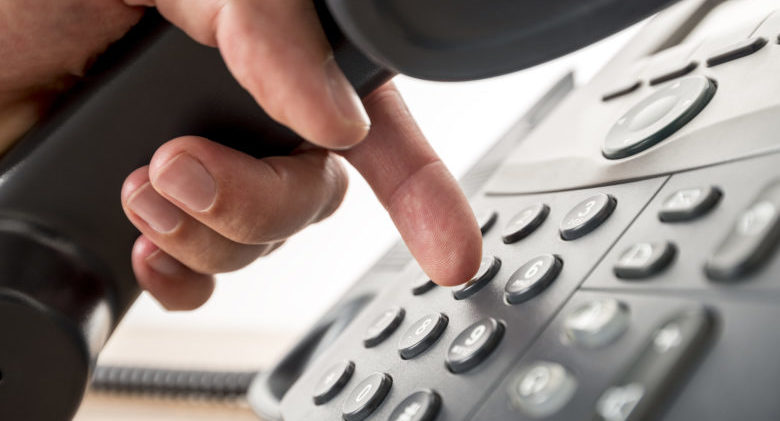
If you think you suffer from one or more of these symptoms, you should speak with your doctor as soon as you can. Catching and treating PsA quickly could save the 78 major joints in your body.
[Featured Image Credit: www.ichiropractic.net]
